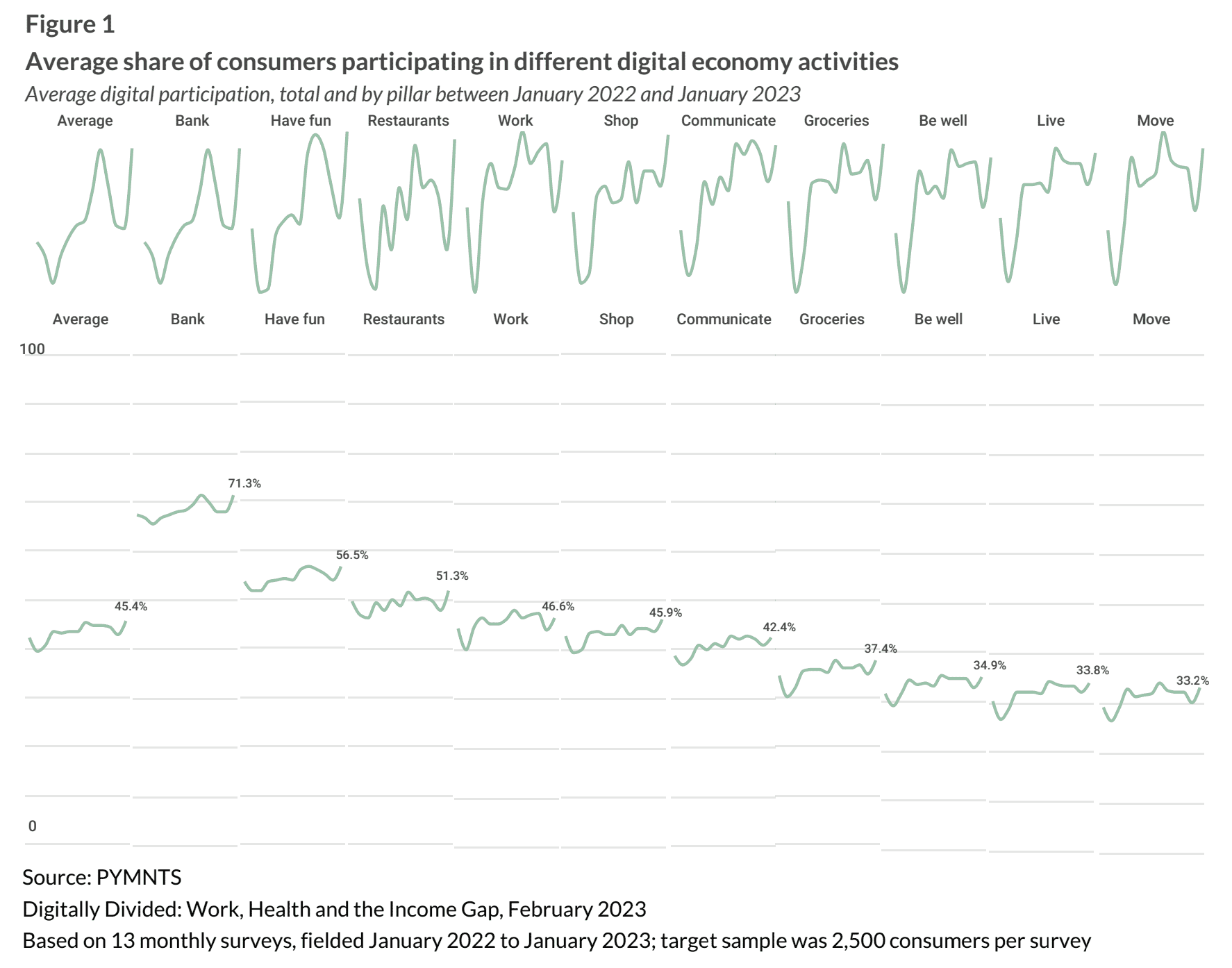Grocers Continue to Lag Way Behind Restaurants in Digital Adoption

Grocers’ digital investments have not been enough to catch up to restaurants, PYMNTS research shows.
The Context
Grocers have been working hard to drive digital adoption to gather data about their customers and become smarter about marketing to their needs and preferences.
For instance, Kroger, the nation’s leading pure-play grocer, shared on a call with analysts Thursday (March 2) discussing its fourth quarter 2022 financial results and how important these initiatives have been in driving engagement.
“Our data science teams are using predictive science to serve customers the right products at the right time and at the best value, because we know our customers so well,” CEO Rodney McMullen said. “We were able to provide recommendations to start their baskets and deliver personalized offers on the products most important to them, saving them time and money and making their lives easier. In return our customers reward us with their trust and loyalty.”
Similarly, multinational grocery giant Ahold Delhaize, parent of a range of well-known supermarket chains, shared how its rewards personalization efforts are driving record-high digital engagement on a recent call with analysts discussing the company’s fourth-quarter 2022 financial results.
“U.S. brand sales from loyalty programs and online orders reached an all-time high,” Chief Financial Officer Natalie Knight said. “This has been a trend we saw building throughout the year as our consistent investment in growing these capabilities again delivered incremental sales gains. Our brands’ direct customer engagement activities are a good example, now reaching around 30 million households and delivering over 10 billion personalized offers annually.”
Yet, these efforts have not been enough to close the digital gap between grocers and restaurants in the competition for consumers’ overall food spending.
By the Numbers
PYMNTS’ study The ConnectedEconomy™ Monthly Report: Digitally Divided — Work, Health and the Income Gap, which draws from a January survey of a census-balanced panel of more than 2,700 U.S. consumers, finds that 51% engage with restaurants via digital channels, while only 37% do the same with grocers.


